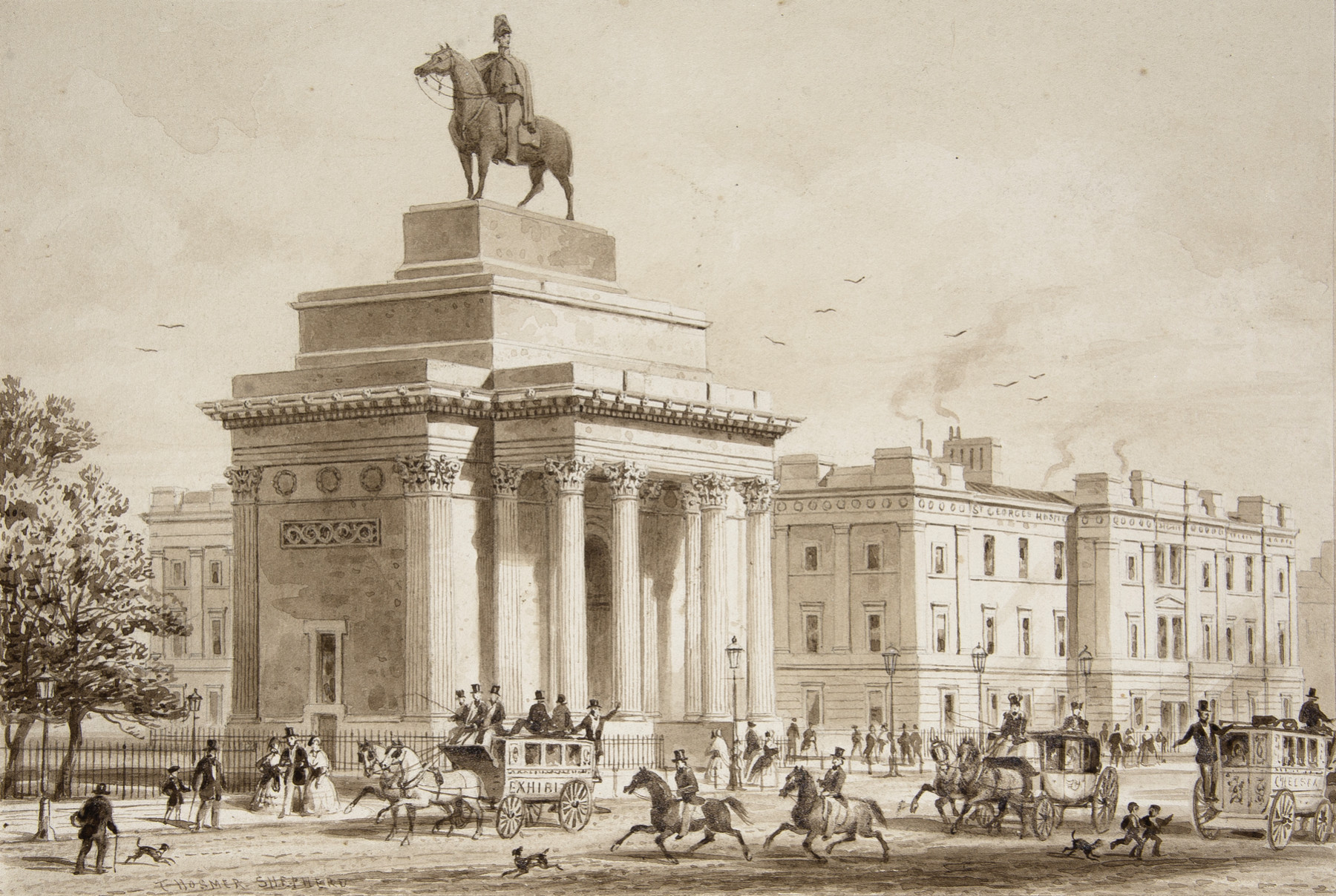
(click image to enlarge)
George IV planned both Marble Arch and Wellington Arch in 1825 to commemorate Britain's victories in the Napoleonic Wars and they formed part of a major redevelopment to grandify the approach and surrounding areas to Buckingham Palace. Decimus Burton (1800-1881) was selected as the project’s architect. At Hyde Park Corner, Burton conceived a classical gateway and screen, and facing it, a triumphal arch (Wellington Arch) to create an impressive entrance to the palace’s approach. Burton’s original design for the arch, based on the Arch of Titus in Rome, was rejected as the committee envisaged a more ostentatious one like Joseph Nash’s Marble Arch. Burton’s subsequent design, inspired by a fragment found in the Roman Forum, was accepted in 1826 and built. However, due to the King’s overspending on Buckingham Palace, the intended surmounting sculpture was never added.
Despite an impassioned and national debate, a monumental equestrian statue of Arthur Wellesley, 1st Duke of Wellington by Matthew Cotes Wyatt, the largest equestrian figure ever made at (40 tons and 28 feet high), was installed on top in 1846. Burton objected over many years, stating the statue would ‘disfigure’ his arch, being too large and contrary to Classical precedent, would have to be placed across rather than parallel to the direction of the road underneath. He wrote,
‘The arch would, I consider, suffer greatly in importance if the colossal statue in question be placed there, because it would become a mere pedestal. The want of proportion in the proposed surmount, compared with the columns and other details of the architecture, would show that they had been designed by different hands, and without reference for each other.’
The debate, didn’t cease after the installation and became for many a national artistic embarrassment. However, by the 1880s traffic at Hyde Park Corner became so congested, it was suggested the arch be moved to the top of Constitution Hill and Francis Fearon, Burton’s great-nephew, advocated the removal of the statue during this move, saying that the arch should be ‘relieved once and for all of its unsightly load’. Fearon’s campaign was successful, the Wellington statue was removed to Aldershot, the arch was relocated and in 1912, a Quadriga by Captain Adrian Jones was placed (as Burton had intended) on top.
Thomas Hosmer Shepherd’s watercolour shows the Wellington Arch in its originally intended position, facing the screen and parallel to the entrance to Piccadilly and surmounted by the vastly disproportionate sculpture of Wellington.